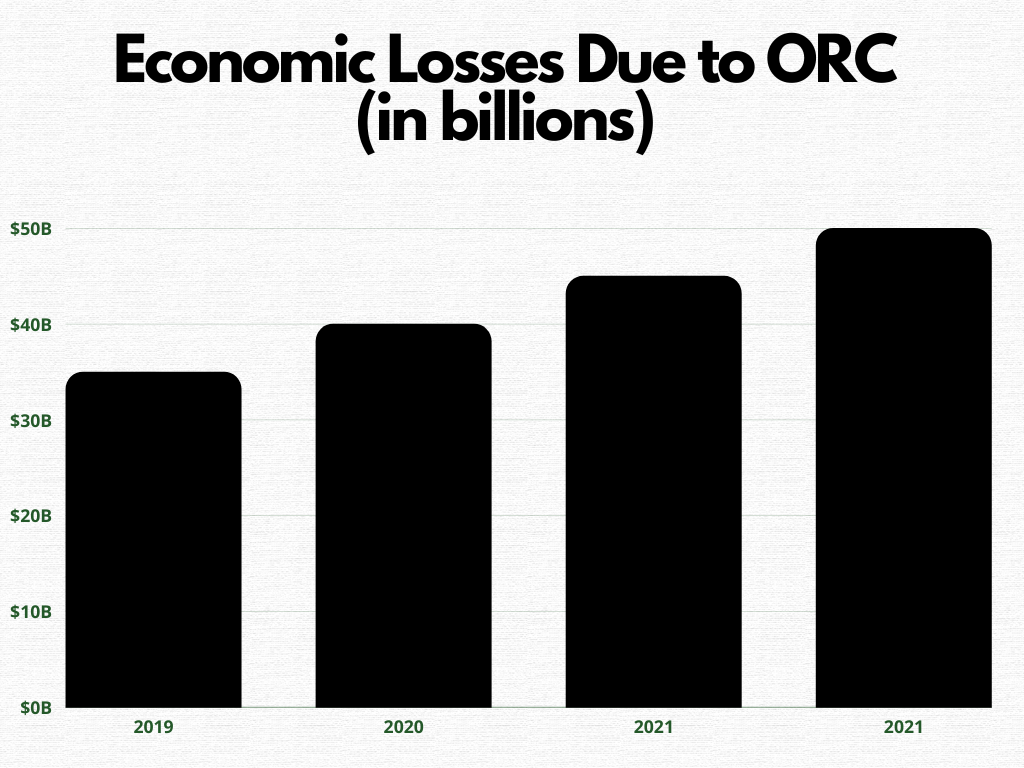06:18:03 pm 09/29/2023
Viewed: 8611
The Rise of Organized Retail Crime: A Deep Dive into Boosting and Fencing Operations
Introduction
The retail industry is grappling with a surge in theft and organized retail crime, leading to billions of dollars in losses and posing serious threats to both employees and customers. Major retailers like Target, Starbucks, McDonald’s, Nike, Chase Bank, and Walmart have been forced to close stores or reduce hours due to the impact. According to a 2022 report by the National Retail Federation, the industry suffered a staggering $112.1 billion in losses, marking a 26.5% increase from the previous year.
The Anatomy of Organized Retail Crime
Organized retail crime is generally divided into two distinct but interconnected roles: Boosters and Fences.
Boosters: The Frontline Thieves
Boosters are individuals who specialize in stealing goods from retail outlets and e-commerce platforms. Their profiles vary widely, from drug addicts trying to support their habits, to members of larger criminal networks, to opportunistic thrill-seekers.
Tools of the Trade
Boosters employ a range of techniques to carry out their thefts, including:
Concealment: Items are hidden in clothing or special "booster bags" lined with material that blocks electronic tags.
Switching: Price tags and barcodes are swapped to pay less for the item or to deceive self-checkout machines.
Grab and Run: This brazen method involves simply snatching items and fleeing the store, often coordinated with a team to distract staff or block pursuers.
High-Value Targets
These criminals often focus on high-value, high-demand, or easily concealable items like electronics, cosmetics, clothing, and medicine. Seasonal trends can also dictate what items are targeted.
The Cost to Retailers
The "grab and run" method alone had an average loss of $1,695 per incident in 2020, according to the National Retail Federation. Such acts not only result in lost revenue but also necessitate increased security measures, affecting both pricing and employee wages. They also endanger store staff and customers, tarnishing the store's reputation and customer experience.
Fencing Operations: The Resale Network
After the boosters secure the stolen merchandise, it is handed over to fences or fencing operations. These entities specialize in reselling the items for profit. Sales can happen through physical locations like pawn shops or online platforms, including social media and dark web markets. They may also employ middlemen like wholesalers to launder the stolen goods and profits.
The Dark Connections
Organized retail crime is not an isolated problem. Many of these operations are linked to larger criminal networks involved in drug trafficking, money laundering, or even terrorism. They may have connections that range from corrupt officials to legal advisors, further complicating law enforcement efforts.
The Digital Frontier
Modern-day thieves are also utilizing social media platforms like Facebook, Instagram, and Snapchat to coordinate thefts and resell stolen goods. Online fraud methods, such as identity theft and fraudulent transactions, are also on the rise, exploiting the vulnerabilities of online and omnichannel retailing.
Conclusion
As organized retail crime continues to evolve, the stakes are getting higher for both retailers and consumers. Despite the industry's investments in security measures, the problem remains a "fundamental challenge," as noted by Target, who recently closed nine stores due to these issues. The battle against organized retail crime is far from over, requiring a multi-faceted approach that goes beyond traditional security measures and involves tackling the larger criminal networks at play.
Introduction
The retail industry is grappling with a surge in theft and organized retail crime, leading to billions of dollars in losses and posing serious threats to both employees and customers. Major retailers like Target, Starbucks, McDonald’s, Nike, Chase Bank, and Walmart have been forced to close stores or reduce hours due to the impact. According to a 2022 report by the National Retail Federation, the industry suffered a staggering $112.1 billion in losses, marking a 26.5% increase from the previous year.
The Anatomy of Organized Retail Crime
Organized retail crime is generally divided into two distinct but interconnected roles: Boosters and Fences.
Boosters: The Frontline Thieves
Boosters are individuals who specialize in stealing goods from retail outlets and e-commerce platforms. Their profiles vary widely, from drug addicts trying to support their habits, to members of larger criminal networks, to opportunistic thrill-seekers.
Tools of the Trade
Boosters employ a range of techniques to carry out their thefts, including:
Concealment: Items are hidden in clothing or special "booster bags" lined with material that blocks electronic tags.
Switching: Price tags and barcodes are swapped to pay less for the item or to deceive self-checkout machines.
Grab and Run: This brazen method involves simply snatching items and fleeing the store, often coordinated with a team to distract staff or block pursuers.
High-Value Targets
These criminals often focus on high-value, high-demand, or easily concealable items like electronics, cosmetics, clothing, and medicine. Seasonal trends can also dictate what items are targeted.
The Cost to Retailers
The "grab and run" method alone had an average loss of $1,695 per incident in 2020, according to the National Retail Federation. Such acts not only result in lost revenue but also necessitate increased security measures, affecting both pricing and employee wages. They also endanger store staff and customers, tarnishing the store's reputation and customer experience.
Fencing Operations: The Resale Network
After the boosters secure the stolen merchandise, it is handed over to fences or fencing operations. These entities specialize in reselling the items for profit. Sales can happen through physical locations like pawn shops or online platforms, including social media and dark web markets. They may also employ middlemen like wholesalers to launder the stolen goods and profits.
The Dark Connections
Organized retail crime is not an isolated problem. Many of these operations are linked to larger criminal networks involved in drug trafficking, money laundering, or even terrorism. They may have connections that range from corrupt officials to legal advisors, further complicating law enforcement efforts.
The Digital Frontier
Modern-day thieves are also utilizing social media platforms like Facebook, Instagram, and Snapchat to coordinate thefts and resell stolen goods. Online fraud methods, such as identity theft and fraudulent transactions, are also on the rise, exploiting the vulnerabilities of online and omnichannel retailing.
Conclusion
As organized retail crime continues to evolve, the stakes are getting higher for both retailers and consumers. Despite the industry's investments in security measures, the problem remains a "fundamental challenge," as noted by Target, who recently closed nine stores due to these issues. The battle against organized retail crime is far from over, requiring a multi-faceted approach that goes beyond traditional security measures and involves tackling the larger criminal networks at play.
No video exists.





Comments
brunos